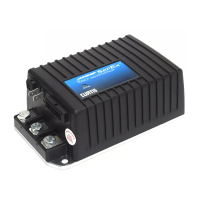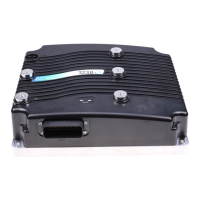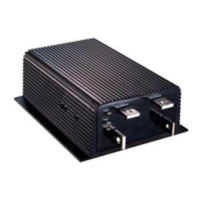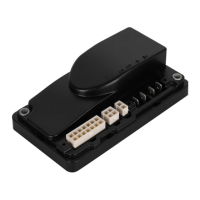Curtis 1230 Manual, Rev. C
A-1
1 6 O C T O B E R 2 0 0 7 R E V I E W D R A F T
APPENDIX A
VEHICLE DESIGN CONSIDERATIONS
REGARDING ELECTROMAGNETIC COMPATIBILITY (EMC)
AND ELECTROSTATIC DISCHARGE (ESD)
ELECTROMAGNETIC COMPATIBILITY (EMC)
Electromagnetic compatibility (EMC) encompasses two areas: emissions and
immunity. Emissions are radio frequency (rf) energy generated by a product.
This energy has the potential to interfere with communications systems such
as radio, television, cellular phones, dispatching, aircraft, etc. Immunity is the
ability of a product to operate normally in the presence of rf energy.
EMC is ultimately a system design issue. Part of the EMC performance
is designed into or inherent in each component; another part is designed into
or inherent in end product characteristics such as shielding, wiring, and layout;
and, finally, a portion is a function of the interactions between all these parts.
The design techniques presented below can enhance EMC performance in
products that use Curtis motor controllers.
Emissions
Signals with high frequency content can produce significant emissions if con-
nected to a large enough radiating area (created by long wires spaced far apart).
Contactor drivers and the motor drive output from Curtis controllers can con
-
tribute to rf emissions. Both types of output are pulse width modulated square
waves with fast rise and fall times that are rich in harmonics. (Note: contactor
drivers that are not modulated will not contribute to emissions.) The impact
of these switching waveforms can be minimized by making the wires from the
controller to the contactor or motor as short as possible and by placing the
wires near each other (bundle contactor wires with Coil Return; bundle motor
wires separately).
For applications requiring very low emissions, the solution may involve
enclosing the controller, interconnect wires, contactors, and motor together in
one shielded box. Emissions can also couple to battery supply leads and throttle
circuit wires outside the box, so ferrite beads near the controller may also be
required on these unshielded wires in some applications. It is best to keep the
noisy signals as far as possible from sensitive wires.
Immunity
Immunity to radiated electric fields can be improved either by reducing overall
circuit sensitivity or by keeping undesired signals away from this circuitry. The
controller circuitry itself cannot be made less sensitive, since it must accurately
detect and process low level signals from sensors such as the throttle potenti-
ometer. Thus immunity is generally achieved by preventing the external rf
energy from coupling into sensitive circuitry. This rf energy can get into the
controller circuitry via conducted paths and radiated paths.
APPENDIX A: EMC & ESD DESIGN CONSIDERATIONS
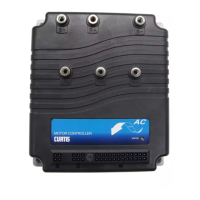
